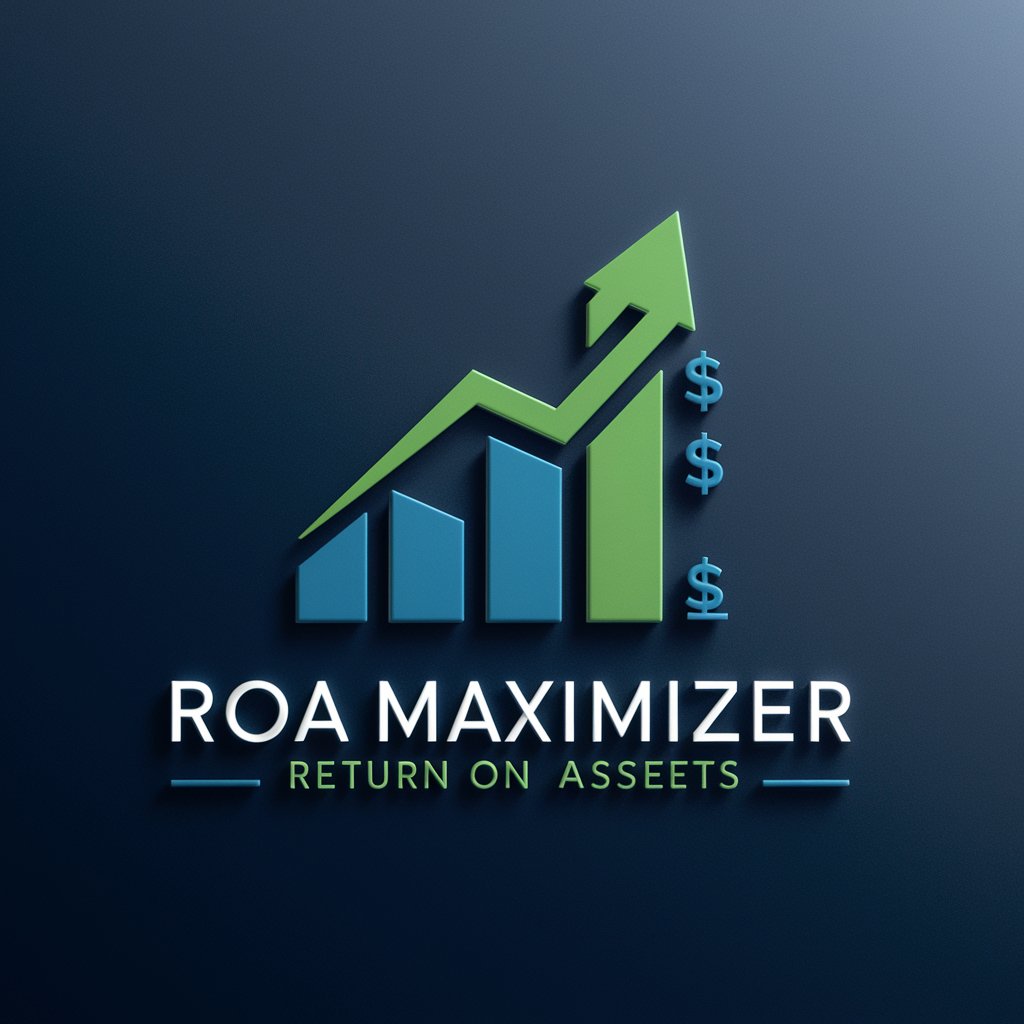Return on Assets (ROA) - ROA Insight Generation

Hi there! Let's optimize your return on assets today.
Maximizing Profits with AI-Powered Efficiency
Provide the latest quarterly financial data for analysis and ROA calculation.
How can I improve my company's return on assets given these financial details?
What strategies can I implement to enhance asset utilization?
Analyze this set of financial data to identify areas for improving ROA.
Get Embed Code
Understanding Return on Assets (ROA)
Return on Assets (ROA) is a financial metric used to measure the efficiency of a company in generating income from its assets. It is calculated by dividing the net income by the total assets of the company. ROA is a crucial indicator of how well a company is utilizing its assets to produce profit. It is designed to provide insights into the financial performance and operational efficiency of a business. For example, a company with a net income of $10 million and total assets of $50 million would have an ROA of 20%, indicating a high level of efficiency in asset utilization. Scenarios where ROA is particularly insightful include evaluating the performance of companies with significant physical assets, such as manufacturing firms, or assessing the impact of new investments on a company's profitability. Powered by ChatGPT-4o。

Core Functions of Return on Assets (ROA)
Performance Evaluation
Example
Comparing the ROA figures of different years to assess improvement or decline in asset efficiency.
Scenario
A manufacturing company reviews its annual ROA to determine if the new machinery purchased has improved overall efficiency and profitability.
Investment Decision Making
Example
Investors use ROA to identify high-performing companies for potential investment.
Scenario
An investor analyzes the ROA of two companies within the same industry to decide which company's stocks to buy, based on which one uses its assets more efficiently to generate profits.
Strategic Planning
Example
Businesses analyze ROA to plan future investments or to decide on divesting non-performing assets.
Scenario
A retail chain uses its ROA to decide whether to open new stores or renovate existing ones, aiming to boost profitability through better asset utilization.
Ideal Users of ROA Services
Corporate Executives
CEOs, CFOs, and other top executives who need to understand their company's financial efficiency to make informed decisions about investments, cost management, and strategic planning.
Financial Analysts
Professionals who analyze financial data to provide investment recommendations, evaluate industry trends, and advise companies on improving financial performance.
Small Business Owners
Owners of small to medium-sized enterprises who need to maximize their asset utilization to compete effectively and grow their businesses in a competitive market.
Investors
Individual and institutional investors looking for metrics that provide insights into a company's efficiency and potential for long-term profitability.

How to Use Return on Assets (ROA) Effectively
Start with a Free Trial
Initiate your journey by accessing a free trial on a leading AI platform, offering direct insights without the need for a subscription or prior login.
Gather Financial Data
Compile comprehensive financial statements, including balance sheets and income statements, to accurately calculate and analyze your ROA.
Calculate ROA
Utilize the formula ROA = Net Income / Total Assets to determine your organization's efficiency in utilizing its assets to generate profit.
Analyze Results
Interpret your ROA figures in the context of industry benchmarks and historical performance to identify areas of strength and opportunities for improvement.
Implement Strategies
Based on ROA insights, deploy targeted strategies to optimize asset utilization, reduce inefficiencies, and improve overall financial performance.
Try other advanced and practical GPTs
Building Trades
Empowering Construction with AI

Wholesale
Empowering your wholesale strategy with AI.

Luxury Real Estate
Empowering Luxury Real Estate Decisions with AI

Ski
Elevate Your Slopes Experience with AI

Traffic Tickets
Navigate Traffic Laws with AI-Powered Assistance

John Brains Doe
Learning with Laughter: AI-Powered Conversations

Bookshelf
Elevate Your Shelves with AI

Wildlife Identification
Discover nature with AI insight

Pro Life
Advocating for Life with AI

Yard Tools
AI-Powered Yard Maintenance Advisor

Valuable
Discover the Story Behind Every Valuable

Protection Plan
Empowering Your Purchases with AI

Detailed Q&A on Return on Assets (ROA)
What exactly is Return on Assets (ROA)?
ROA is a financial metric that measures the efficiency of a company's use of its assets to generate net income. It's calculated by dividing net income by total assets.
Why is ROA important for businesses?
ROA provides insights into how effectively a company is using its assets to produce profit, offering a clear indication of operational efficiency and profitability.
How can improving ROA benefit my company?
Enhancing your ROA can lead to better asset utilization, improved financial performance, and increased investor confidence by demonstrating efficient management and profitability.
Can ROA vary by industry?
Yes, acceptable ROA levels can differ significantly across industries due to variations in asset intensity. Comparing your ROA with industry averages provides more meaningful insights.
How do I interpret my company's ROA?
A higher ROA indicates more efficient asset use and higher profitability. Compare your ROA against industry benchmarks and historical data to evaluate performance and identify improvement areas.
